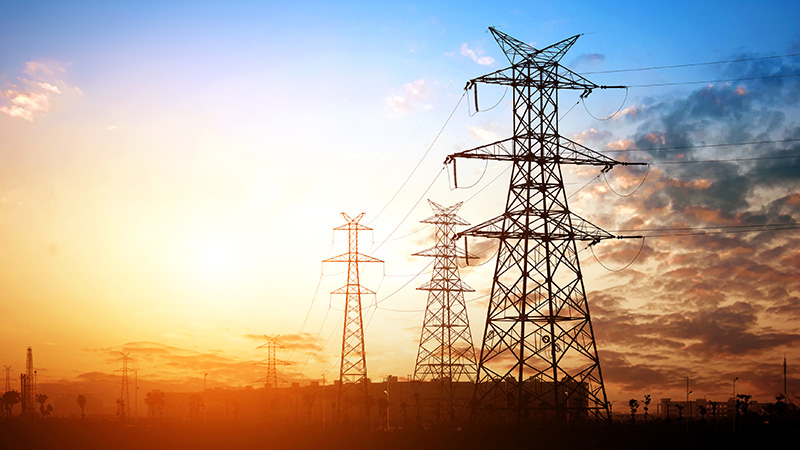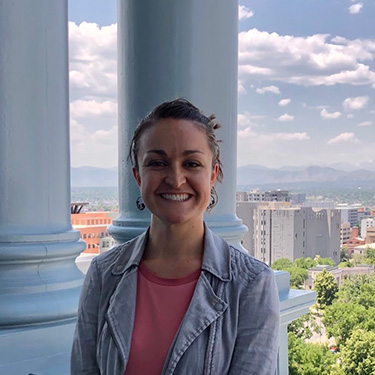June 15, 2022
Intro
My name is Anna Evans. I was a Transmission Policy Intern for Western Resource Advocates (WRA) during the spring 2022. I worked remotely from Golden, Colo., while making a monthly trip to WRA’s Salt Lake City office to benefit from working and mingling with coworkers in person. Before this internship, I had a policy fellowship under my belt, but mostly had a technical background stemming from a bachelor’s degree in mechanical engineering and a master’s degree in Advanced Energy Systems. I chose the internship to learn more of the nuances of making policy and to see if energy policy is the career direction for me.
I chose the internship to learn more of the nuances of making policy and to see if energy policy is the career direction for me.
This internship, a collaboration between WRA and Energy Strategies, LLC, an energy consulting firm, gave me a chance to witness policy through both a non-profit and a consulting lens.
The Project
Short background on electrical transmission in the West
My three-month project maps electrical transmission in the Western United States. There is a lack of transparent, understandable, publicly available data on how much and where electricity is flowing along the “highways” of the electric grid. As a result, policymakers, consumer advocates, and transmission planners cannot easily make informed decisions about the development of transmission.
Why is this important? To mitigate climate change and create a sustainable power system, more transmission lines are needed to reliably move renewable energy from where it’s generated in sunny and windy locations into cities where it is used. Thanks to the (fun) fact that electricity can travel across the country essentially instantly, it is possible to power Los Angeles from the windy plains of Wyoming, or Seattle from sunny Arizona. To make this a reality, transmission lines need to be planned, built, and operated. Knowing which lines have available capacity (enough lanes on the highway) and where new lanes need to be built will be key to this renewable energy future.
Short background on transmission flow data
Current grid operators have full access to the transmission flow data in order to reliably manage electricity within their operating area. However, due to business and security reasons, the majority of the data is not publicized. Regulations have required some data to be made public and it is posted to Open Access Same Time Information Systems (OASIS). Even the data that is available on an OASIS can be hard to understand, interpret, and use without a software engineer at your shoulder. Recognizing both this lack of transmission flow data transparency and the potential insights hidden within the data, WRA created this internship project.
The goal of the project and its deliverables
My project used the current publicly available transmission flow data to create a visual dashboard of transmission flows in the West. This facilitates the understanding of where and how much capacity is available, as well as the cost of congestion, using the Locational Marginal Prices (LMP) for electricity in different areas. LMP captures the differences in the price for the next available unit of electricity based on transmission and reserve constraints. The data looks three years into the past and a year into the future to visualize Western transmission trends over time. The dashboard is a first step in adding transparency and gaining insight into Western transmission flows.
In addition to the dashboard, I collected and summarized my data availability research and created a resource for other non-profits and parties interested in the state of transmission flow data. I highlighted the availability, access, gaps, and challenges with the data sources that are publicly available and proposed how data could be more transparently shared. This data research was incorporated into a transmission primer paper that also baselines the state of transmission line operation in the West.
Impact of the project and why it matters
Lack of electrical transmission is a large and glaring gap that needs to be filled to meet state renewable energy goals. Accessible and digestible data will be the first step to enable decisionmakers to make fact-based decisions about transmission policy and development. Having the dashboard within WRA’s toolbox can help deliver science-based advocacy to policymakers, making effective transmission development a reality.
Impressions of WRA
Witnessing how non-profits work and interact in the policy space
After doing this internship, I have a better view of how a non-profit can influence policy. Through sitting in on meetings that included policymakers, regulators, business leaders, and non-profits with similar and disparate goals to WRA, I saw the interactions between stakeholders and how policy gets made. There are a variety of strategies to influence policy (blogs, testimony, policy briefs, presence at meetings and conferences, coalition building, etc.), but I saw that personal conversations and relationships are important, and potentially the most impactful, ways to make policy come to fruition.
WRA has built these relationships over time and has earned its role as a respected and sought-after opinion in the clean energy and decarbonization advocacy space. I better understand the power dynamics of energy policy and recognize that without non-profits like WRA, there would be less of a voice for conservation within the policy conversations and renewable energy’s path forward would be extra turbulent.
The people
The greatest side benefit of the internship experience was interacting with the hard working, mission driven, comical WRAers.
The greatest side benefit of the internship experience was interacting with the hard working, mission driven, comical WRAers. I had freedom to meet with everyone from all levels of the organization, from the top (WRA President Jon Goldin-Dubois) to the bottom (fellow interns), and was treated as an equal, feeling instantly comfortable within the welcoming culture. There is an inherent trust within WRA that people will work hard and get their work done, which is a quality I will now be filtering for during my future job searches. WRA employees are inspiring and I’m glad conservation advocacy is so effectively pushed forward by such smart and thoughtful people.
Conclusion
My WRA internship has been extended by a couple months thanks to the support of a partnership organization, the Clean Energy Buyer’s Association (CEBA). The additional time will be used to finish the primer paper and collaborate with another highly respected organization in the clean energy advocacy space. I look forward to the extra time to learn the nuances of policymaking while incorporating feedback from energy policy experts into my work, and time to practice catering policy communication to various audiences.
This spring’s Transmission Policy Internship gave me renewed hope in the fight against climate change and the power of driven people with a common mission. A giant, but certainly insufficient, thank you to my main WRA mentor Vijay Satyal (the Regional Energy Markets Manager); to Energy Strategies for seeing and taking on WRA’s project vision; and to the entire team at WRA for providing a priceless internship experience.



